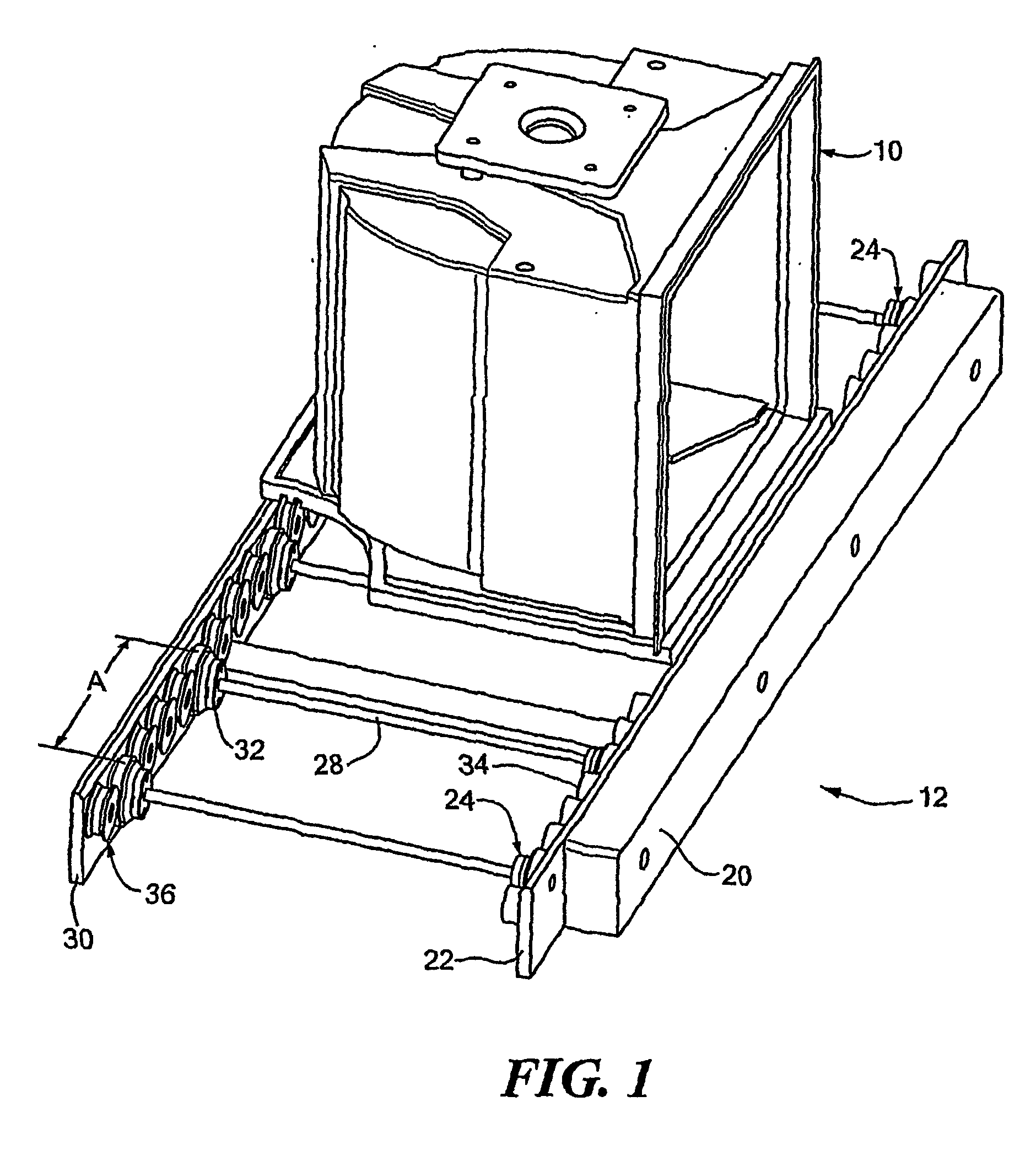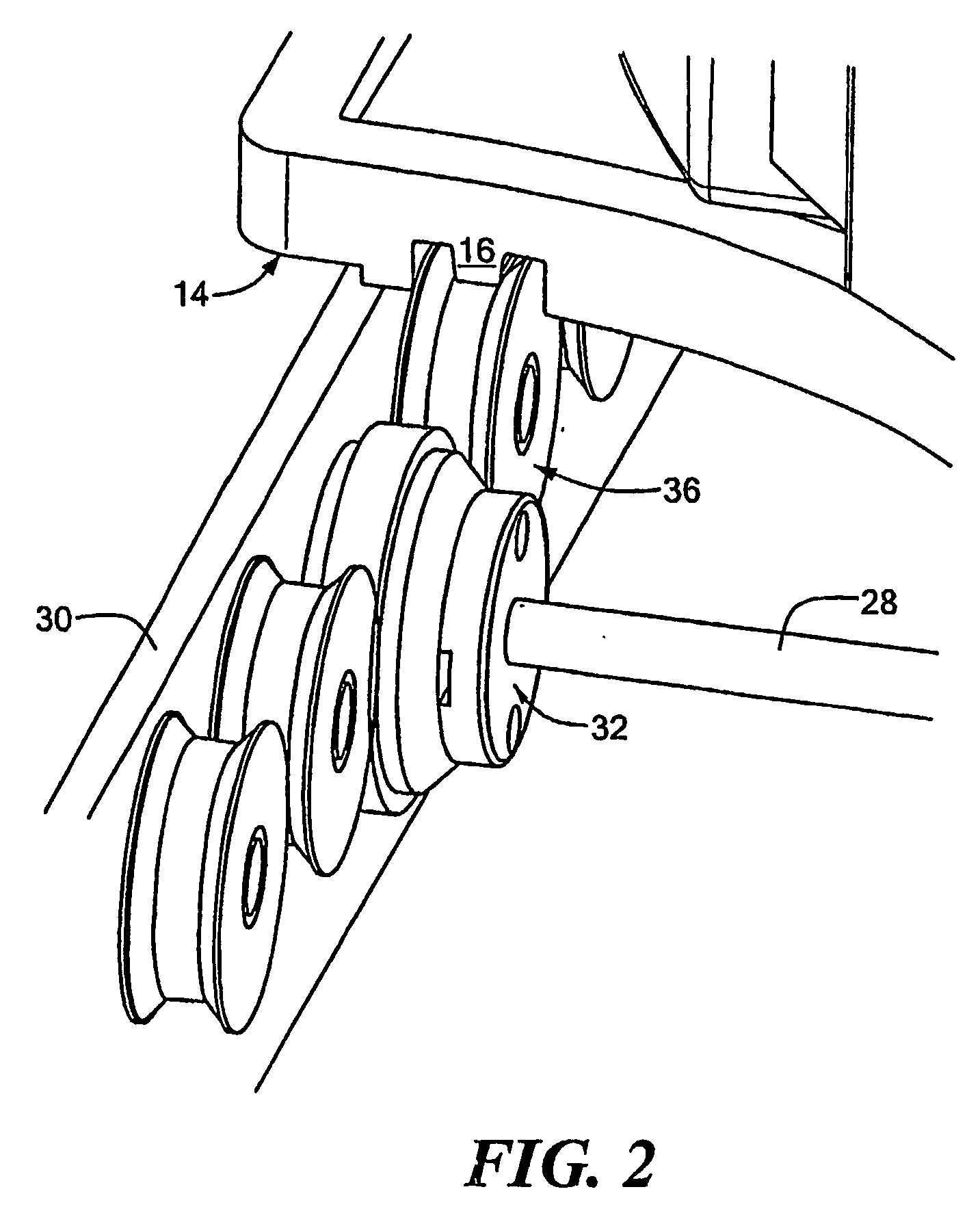Clean room guided conveyor
a conveyor and guided technology, applied in the direction of roller-ways, in-vivo radioactive preparations, medical preparations, etc., can solve the problems of material or product mishandling or damage, contamination is a particular issue with semiconductor wafers, and the majority of existing conveyor systems impart undesired external forces to the wafer payload, so as to reduce the formation of particulate matter, reduce the formation of frictional contact, and reduce the effect of external forces
- Summary
- Abstract
- Description
- Claims
- Application Information
AI Technical Summary
Benefits of technology
Problems solved by technology
Method used
Image
Examples
Embodiment Construction
[0025] The present invention is useful for transporting sensitive materials in a clean room. In a first embodiment, the invention is directed to the conveyor system shown in FIGS. 1-4. The system includes a carrier 10 and a conveyor assembly 12. The bottom surface 14 of the carrier has a rib 16 that is parallel to the direction of travel of the carrier. This rib extends the length of the carrier bottom surface. The rib may be recessed so as to not extend beyond the bottom surface of the carrier, may be flush with the bottom surface, or may extend beyond the bottom surface. While a recessed rib may be less likely to interfere with other components of the carrier system and may experience less wear, a projecting rib may be useful for supporting the carrier on a solid surface. The rib preferably has a square or rectangular cross-section.
[0026] Alternative embodiments of the rib may include designs in which the rib does- not extend the length of the carrier 10 or those that have a plur...
PUM
 Login to View More
Login to View More Abstract
Description
Claims
Application Information
 Login to View More
Login to View More - R&D
- Intellectual Property
- Life Sciences
- Materials
- Tech Scout
- Unparalleled Data Quality
- Higher Quality Content
- 60% Fewer Hallucinations
Browse by: Latest US Patents, China's latest patents, Technical Efficacy Thesaurus, Application Domain, Technology Topic, Popular Technical Reports.
© 2025 PatSnap. All rights reserved.Legal|Privacy policy|Modern Slavery Act Transparency Statement|Sitemap|About US| Contact US: help@patsnap.com



